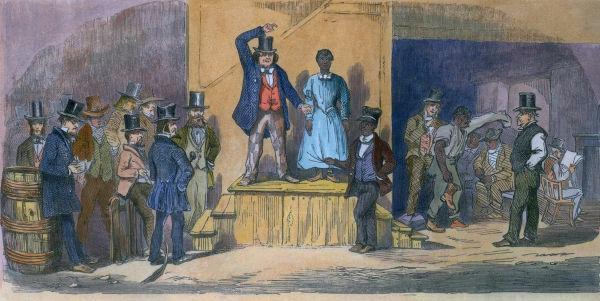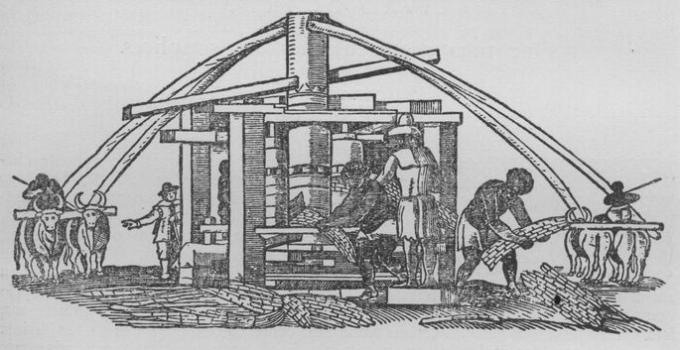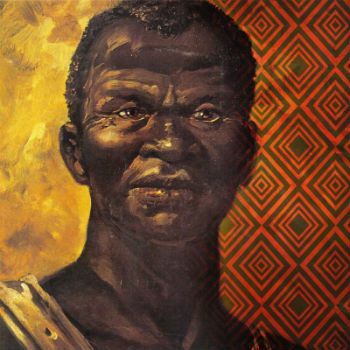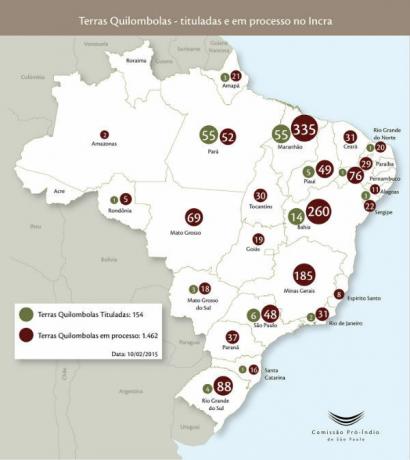THE law of the free womb was enacted in September 28, 1871 after being approved by the Brazilian Legislative. One of abolitionist laws decreed throughout the 19th century to gradually abolish slavery in Brazil, determined that the children of enslaved born after 1871 would be considered free.
This law created two scenarios to give freedom to the children of female slaves, and one of these scenarios provided for compensation to slave masters. Furthermore, it contributed to weaken the legitimacy that slavery had in Brazilian society and was used by the abolitionist movement to combat slavery.
Accessalso: Three great black abolitionists in Brazil
Context: slavery in the 19th century
In the second half of the 19th century, the Brazil was one of the last countries nothe world that kept the use of slave labor. Therefore, this period was very marked by debates around the abolition of slavery. However, this discussion only gained strength from the 1860s onwards, although there were already voices in Brazilian society that defended abolition before that.

One example was José Bonifácio de Andrada e Silva, known as Pthrone of Iindependence. He defended the end of slavery, but not out of a humanitarian position, but because he believed that the country's development would necessarily go through the growth of free labor. He still defended that abolition should happen in a way that whiten the Brazilian population.
postures racist like that of José Bonifácio were common, but in the 1860s, the debate for the abolition of slave labor began to take on the humanitarian contours that pointed to absurdities and the horrors of keeping human beings enslaved. However, the most powerful economic groups, especially the large farmers in the Southeast, were against abolition.
Do not stop now... There's more after the advertising ;)
In any case, the political climate was beginning to accommodate the ideas of promoting abolition, but to avoid drastic ruptures in the country's scenario, the abolitionists began to defend that the transition was performed from mannerslow and gradual. This progressive transition was aimed first of all at preventing the large landowners from suffering immediate losses and also at preventing disorder in the country with popular uprisings.
In order to understand how this favorable scenario was created for the discussion of measures that would initiate this gradual abolition, we need to understand the internal and external scenario. Internally, Brazil lived a new moment since the slave trade had been banned by Eusébio de Queirós Law, enacted in 1850. Externally, our country was beginning to see itself isolatedon the issue of slave labor. Slavery had been abolished in the Portuguese colonies in 1858; in the United States, in 1865; in Suriname (Dutch colony), in 1863; and, in the late 1860s, only Brazil, Cuba and Puerto Rico (the last two were Spanish colonies) still maintained legal slavery.
This harmed the country internationally and put pressure on the Empire to take anti-slavery measures. Thus, those who advocated a gradual abolition claimed that it would be carried out to avoid disruptions. drastic at the same time that it would allow slavers to invest in free labor salaried.
One of the arguments used at the time was that the slavery needed reforms, because if they were not done peacefully, they would be carried out through violence. Thus, the defense of reforms to end slavery slowly sought to make the country suffer the same thing that happened in the United States and Haiti.
In the case of the United States, there was talk of secession war, a civil war that was directly caused by the issue of slavery. In the case of Haiti, there was talk of Haitian Revolution, a slave-led revolutionary movement that resulted in Haiti's independence.
Accessalso: How was the life of ex-slaves after the Golden Law?
political debate
We then know a little about the scenario that caused ideas for reforms to end slavery to be debated in Brazil. O first step was performed by D. Pedro II, the emperor of Brazil. In 1865 he asked José Antônio Pimenta Bueno, one of his advisers, for a study that proposed solutions for the abolition of slave labor in Brazil.

Pimenta Bueno's studies were completed in 1866, and one of the proposals brought the question in free the children of slave mothers, proposing that girls be freed at 16, and boys at 21. Pimenta Bueno's proposal was taken to the State Council for discussion in 1866 and 1867.
The discussion at that time did not move forward under the allegation that the country should focus its efforts on Paraguay War. The proposal then remained abandoned until 1871, but the emperor twice brought to light the importance of discussing agendas related to abolition. He did this in pronouncements that took place in 1867 and 1868.
Although the free womb issue was shelved, a number of other proposals were brought up for discussion and one of them became law. This was the Decree No. 1695, of September 15, 1869, which determined the ban on auctions of enslaved, the separation of couples and also the separation of enslaved people under the age of 15 from their mothers.
Accessalso: Forms of resistance à slavery in Brazil
law of the free womb
With the end of the Paraguay War, the reformist debate gained momentum, despite the resistance of many conservative deputies. The issue of the free womb became the agenda again through the proposal of the Viscount dO White River, which defended the emancipation of the children of the enslaved, taking inspiration from Pimenta Bueno's proposal and similar laws that had been approved in Cuba and in other South American countries.
![The Lei do Ventre Livre was the result of the proposal of the Viscount of Rio Branco.[1]](/f/d7a4ef007ddc81c67b800e377c5c0af7.jpg)
The Visconde do Rio Branco proposal advanced and was approved because of the strong pressure made for this to happen. The vote took place, and the law of the free womb has received 61 votes in favor and 35 against, according to a survey by historian José Murilo de Carvalho|1|. With approval, it went into effect on the day September 28, 1871.
The law basically said that every child of a slave born after the law was enacted would be considered free. This freedom granted to the children of the enslaved would be carried out in stages and gave the masters the chance to explore their work for a certain period.
The law also announced the formation of a fund to pay indemnities to slave masters, which were provided for in one of the scenarios. It also determined that the children of enslaved women should be taken care of by the slave master, who would grant them their freedom when they turned 8 or 21 years old.
If freedom were granted to the 8 years old, the state would indemnify the slave master, paying him the sum of 600 thousand réis, addedyou 6% interest per annum (with a maximum term of 30 years). If freedom were granted to the 21 years, the slave master would not be compensated. Most slave masters chose to remain with the slaves' children until the age of 21, as the exploitation of their labor was more advantageous.
The law still tried in every way to avoid approaches that were harmful to slaveholders, but it brought important changes. Through it, a slave registration, being the master's obligation to register all his slaves within a period of up to one year. Slaves not registered thereafter would be considered free.
The existence of this registry was used by abolitionists to fight slavery in Brazil, as abolitionist lawyers searched slave enrollments for irregularities. When they found one, they went to court to request the release of the unregistered slave. This law also contributed to delegitimize slavery in Brazil, but still had characterconservative, for it was enacted to prevent abrupt changes from taking place.
Slavery, however, had its days numbered. In 1872, Brazil had about 1.5 million slaves, and this number was reduced year by year. the strength of abolitionist movement caused the LawGolden signed in 1888. At that time, Brazil had about 700,000 slaves who were given the right to freedom.
Grades
|1| CARVALHO, José Murilo de. The construction of order: the imperial political elite. Shadow theater: imperial policy. Rio de Janeiro: Brazilian Civilization, 2008, p. 310.
Image credits
[1] commons
By Daniel Neves Silva
History teacher



